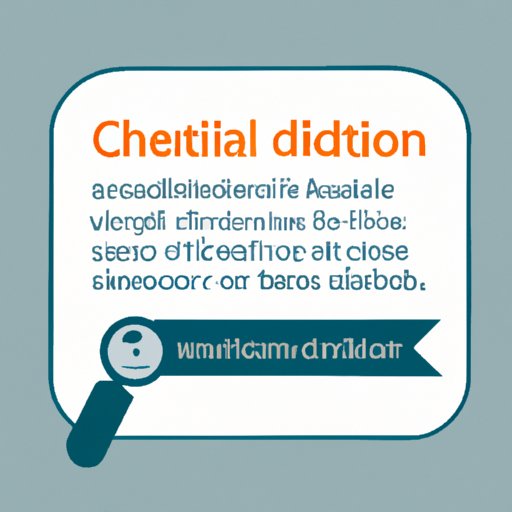
I. Introduction
Citing a documentary is an essential task if you want to give proper credit to the sources used in your research. Documentary citation is the process of acknowledging the information you have used in your work from a video source. The citation helps to identify the original source and provide a reference for anyone looking to delve deeper into the topic.
Citing a documentary is not only important to give credit to the original producers and directors, but also to avoid accusations of plagiarism. Without proper documentary citation, you could be accused of taking credit for someone else’s work. In addition, proper citation can help to lend credibility and authority to your work by demonstrating that you have conducted thorough research. In this article, we will explain how to cite a documentary properly using the most commonly-used citation styles.
Before getting started, you need to decide which citation style you want to use as various citation styles have different rules.
II. Components of Documentary Citation
The key components of a documentary citation include title, director, and the year of production. Additional information may also be necessary, such as the production company or producer’s name. The placement of these components in the citation and formatting rules can vary depending on the citation style.
To gain a better understanding of the components of documentary citation, you can explore the infographic or flowchart available on the website of your preferred citation style you plan to use. The infographic summarises the rules and guidelines for citation components and placement in a visual format that is easy to comprehend and follow.
III. Using Citation Management Tools
If you are not familiar with the rules and guidelines of your preferred citation style, it is advisable to use a citation management tool like EndNote or RefWork that assists you in creating reference lists and bibliographies. The online citation generators and bibliography makers can be of great help in saving time and effort while creating citations.
The citation management tools have some pros and cons. One advantage is that they make the citation process more efficient and automated, reducing the likelihood of errors. Additionally, the tools enable you to quickly and easily generate bibliographies. However, there are some limitations to consider. For instance, the citation generators may not always be able to generate accurate citations and may require you to double-check the citations manually.
IV. Finding Necessary Information
When searching for the necessary information to cite a documentary, you should start with the title of the documentary, the director’s name, the year of production, and the production company. It is also important to confirm the credibility of the sources, specifically when it comes to online sources. Ensuring credibility helps to detect mistakes or inaccuracies in the information used for citation and ensures that you are using reliable sources.
When all the necessary information is not available, there are a few tips and tricks you can follow to cite the documentary correctly. It is recommended that you use as much of the available information as possible when citing your source. If some crucial information is absent, it is important to note that as part of the citation. Additionally, you should locate alternate sources to verify the missing information.
V. Comparison of Citation Styles
There are different citation styles to choose from, and each has its own set of rules for citing documentaries. For instance, the citation style used for humanities is predominantly MLA whilst APA is often the citation style used in natural sciences. Although citation styles share many similarities, depending on your writing context, certain styles may be better suited than others and it is necessary to understand these differences.
Different industries and disciplines may also have specific requirements for how documentaries should be cited. It is recommended that you obtain information from relevant sources before finalising your documentary citation style. Examples of these sources may include: the style manual of your preferred academic or professional organisation, the citation style manual of your institution, and the syllabus/instructions provided by your professors or supervisors.
VI. Common Mistakes and How to Avoid Them
Citation errors, including those made when citing a documentary, can be frustrating and time-consuming to correct. Some of the most common issues include misplaced commas, using the incorrect citation style or format, not providing enough or too much information, and relying on questionable sources. To avoid these complications, it is recommended that you incorporate the following tips into your citation document:
- Double-check all documentary information using credible sources.
- Be sure to use the right citation style for your project or assignment.
- Verify citation components such as director’s name, title, producer’s name, and production date.
- Consistently format citations throughout your document.
- Watch for spelling errors and typos.
VII. Conclusion
Proper citation of a documentary is crucial to avoid accusations of plagiarism and ensure that credit is given where it’s due. Understanding how to cite a documentary properly can help to lend credibility to your research and writing by demonstrating that you have conducted a thorough investigation. By closely following the guidelines outlined in this article, you can ensure you appropriately and accurately cite your documentary sources using the correct citation style for your project.
Remember to continue exploring additional resources to build your knowledge about documentary citation. Implement the tips you have learned from this article and take pride in properly attributing source materials.





